Sound design: an easy way to get a thick piano sound
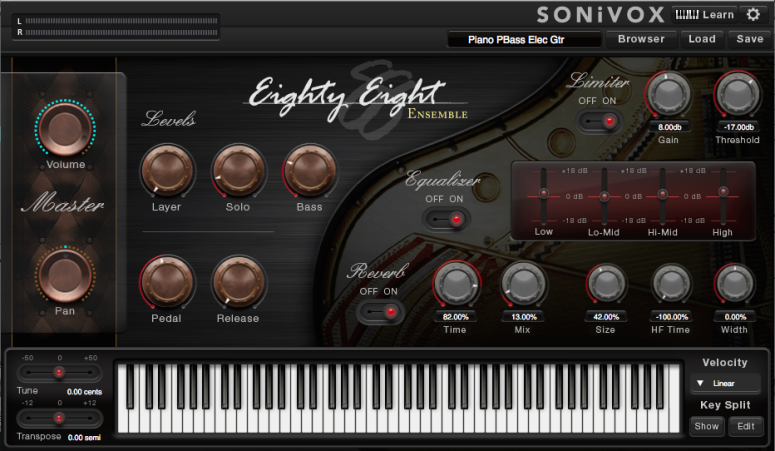
As usual, I discovered this trick by chance. I had a MIDI keyboard controller from which I was triggering some piano sounds in Logic. The sound was mapped to be recorded in Pro Tools, as I normally do. So when I hit “record” and started playing the keyboard, I got an amazing sound I wasn’t expecting at all. It was the same piano sound I was playing with in the beginning but thicker, filling in more space in the mix and stronger than just a boring and plain piano sound.
The hidden layer
The sound was coming from a synthesizer in Reason. The MIDI keyboard was actually controlling both, Logic and Reason, so every time I was playing a key, the information was sent to both. Thus, the piano and the synthesizer were both being played simultaneously, in perfect synchronization.
Which synthesizer?
FM bass synthesizers work well. A combination of them is even better. Basically, any synthesizer with the word “acid” on it would be a perfect fit. Propellerhead Reason comes with a handful of built-in polyphonic synthesizers, one of them is called Malström Graintable Synthesizer. By combining two oscillators in the Malström, each with a complex waveform, we get a sort of church organ sound (dirtier and without reverberation). It’s important to set up the envelopes and filters so that we avoid “light-saber” sounds in the high-end. In a scale from 1 to 128, here are some reference values to start with:
-Attack: 35-45
-Decay: ~110
-Sustain: 45-55
-Release: 50-70
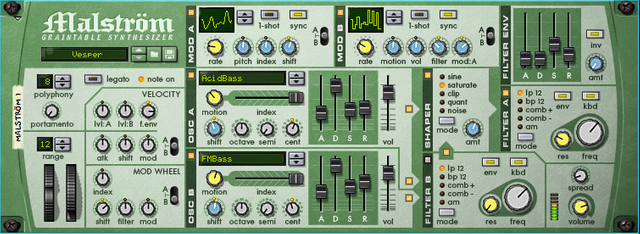
Image: Malström Graintable Synthesizer. Setup example with two oscillators (Acid Bass and FM Bass)
Which piano?
Any grand piano sound of your choice. Try different ones and select the one that blends in better with the synthesizer. I personally prefer the piano libraries in which the sound of the keys being pressed (i.e. the hammers dropping) is not too high and not too loud. If it is, I tend to modify it with equalization, compression, etc.

Image: Logic Piano Motions
The right octave
When playing both, piano and synthesizer, at the same time, you may consider playing the synthesizer one octave above. Playing it at exactly the same octave as the piano might get you a low sound that is way too low. Depending on the vibe of the track, try to find the octave that suits your melody or riff better.
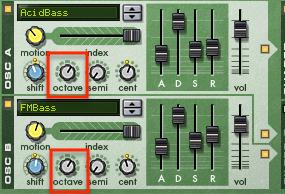
Image: Malström – Selecting the octave
How to combine the sounds
Mixing both layers can be tricky since both tracks share the same frequencies. As I explained in another article, layering is the key word. We need to split the sounds in four layers, two for the synthesizer and two for the piano. As usual, for each instrument, we separate the low-end from the rest, as it is explained in this other article.
We have now these four tracks:
-Low-end of the piano
-Piano (without the low-end)
-Low-end of the synthesizer
-Synthesizer (without the low-end)
We set the low-end tracks in the center (if possible, in mono) and compress them if necessary. Now, as for the other layers, the synthesizer and the piano might be competing at lower mid-range and at the upper mid-range as well. It’s all about priorities. I personally prefer to give priority to the piano over the synthesizer in the upper mid-range and the opposite in the lower mid-range.
Some guidelines to start with:
-Synthesizer: reducing around 2-3dB in the upper mid-range (~1KHz)
-Piano: reducing around 2-3dB in the lower mid-range (~500 Hz)
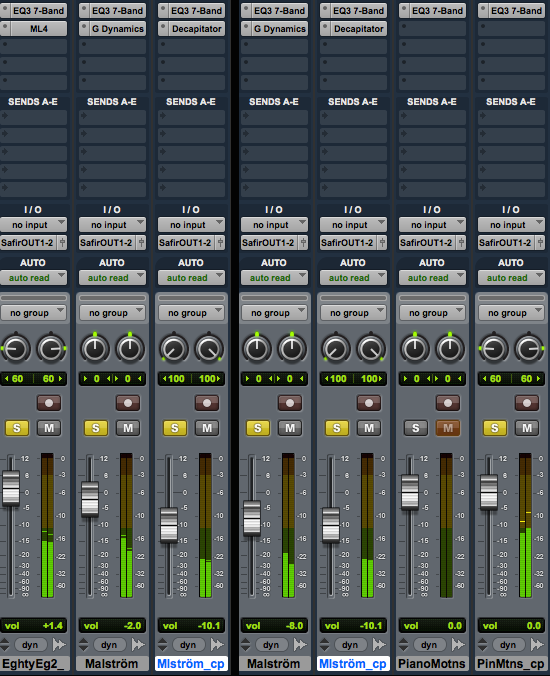
Image: Left: SONiVOX Eighty Eight piano combined with the Malström Graintable synthesizer. Right: Logic Piano Motions combined with the same Malström.
A final touch
If the texture of the synthesizer is not convincing, add some effects here and there. Less is more, so there’s no need to over process the sound. I’ve found that a slight touch of Soundtoys Decapitator polishes it perfectly.
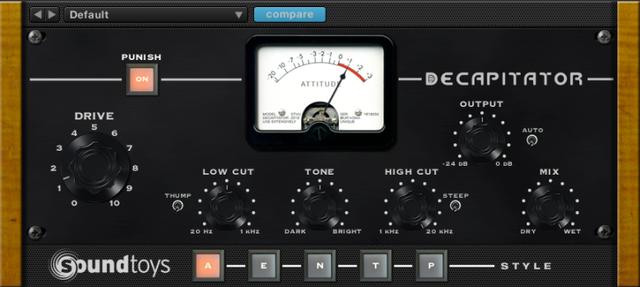
Image: Soundtoys Decapitator – Recommended settings
Less is more
Not all the four tracks need to be in the mix. If there is already a bass line or something similar covering that area, you can get rid of the piano’s low-end layer. If it’s not enough, you can even get rid of both low-end layers. It’s all about finding the right balance in the mix. If there is no bass line at all, I tend to leave only the synthesizer’s low-end plus the other two layers. It sounds deep, thick and with the mellow touch of a piano.
Written by Miguel Chambergo
This article was originally published in CrackingSound
Follow us on Facebook: Cracking Sound
Very nice tutorial. It's no secret that in music production instruments are layered to give a thicker sound. Just don't overdo it.
I totally agree. Thanks for reaching out!
Speaking as a sound designer and someone who is on Steemit since October, unfortunately very few of Steemians do music production. Right now it seems to me like a waste of time. You always have my upvote.
Thanks, mate. Yes, SteemIt is not yet very popular amongst sound designers or mixing engineers, but every time I travel or go to pubs I always meet very young people who are into sound design, both male and female. It's impressive how the community is growing so I believe they will come sooner or later. Sound is my passion so I always love writing about it. Take care.
Can't you risk phase problems by layering this way?